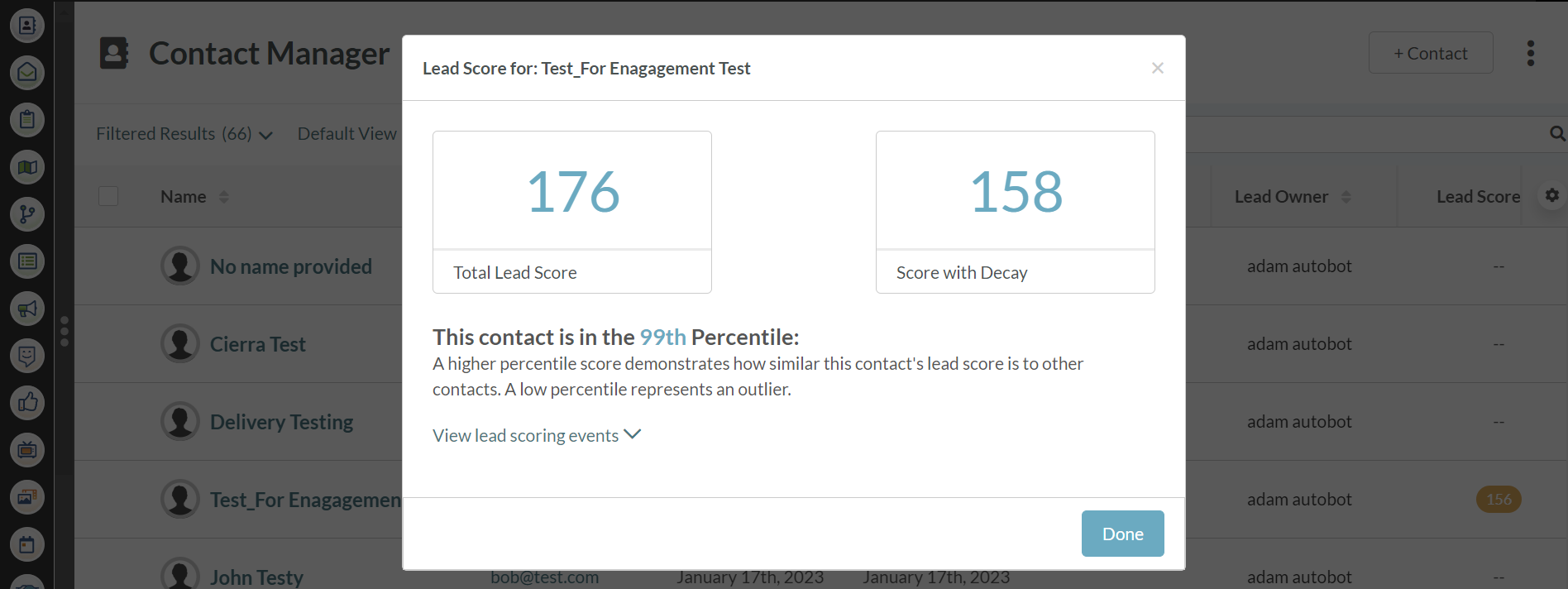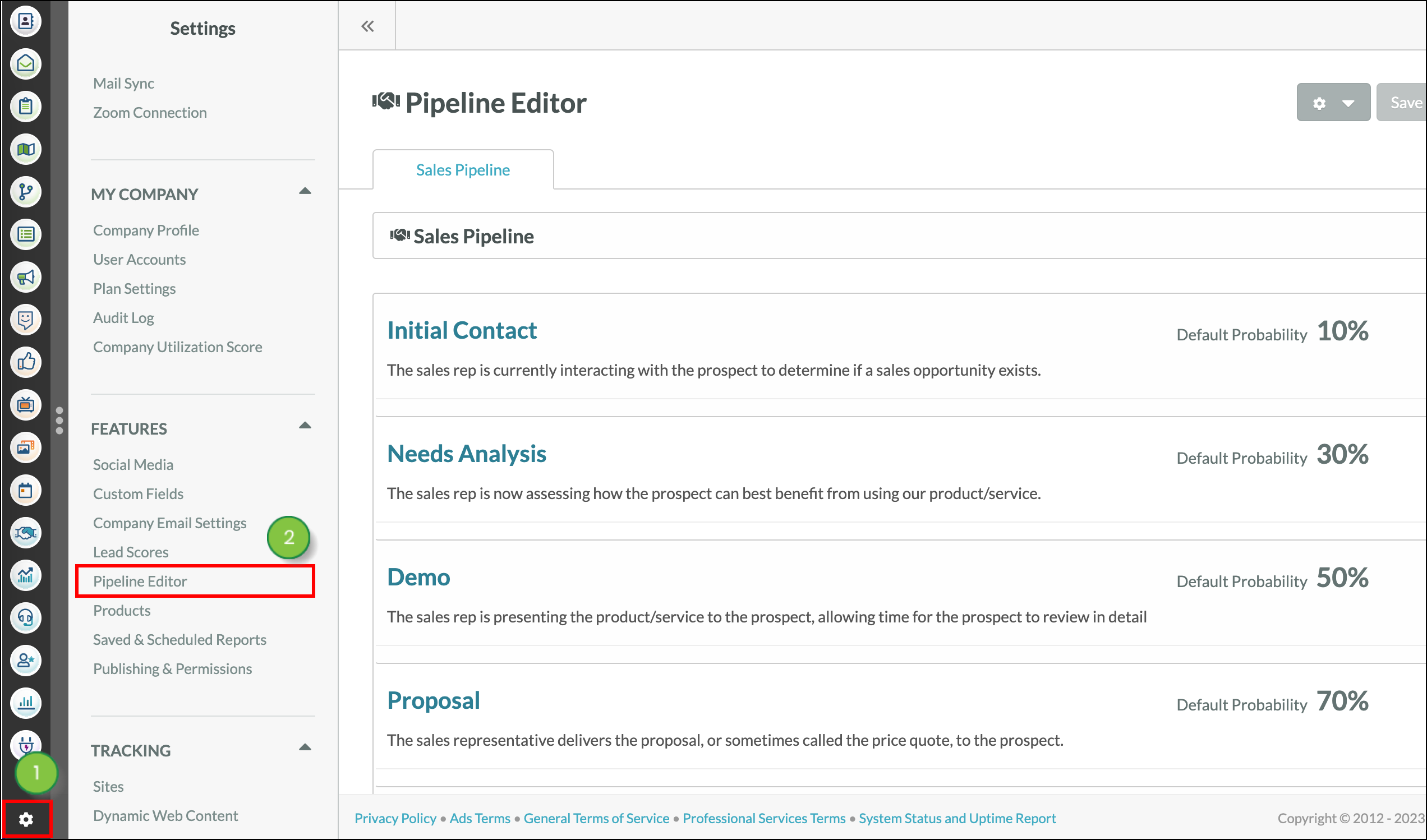
Picture this: You’ve just finished a social media ad for your company. You run it for a few days and see a flurry of activity on your website. However, you don’t make any effort to capture information about your visitors, and once the ad finishes, your website goes quiet. Unfortunately, it’s a missed opportunity to learn more about your audience and what they want. You can avoid this situation with the right lead management tactics and ultimately generate more customer interest.
Lead management means attracting, qualifying, and converting potential customers. It uses tailored strategies to connect with your target audience and convince them to buy from you. With a well-designed lead management strategy, you’ll see increased sales and customer loyalty.
The lead management process exposition
Here’s what to know about the lead management process.
Overview of different lead types
There are two basic lead types most businesses recognize.
- Marketing-qualified leads (MQLs) show interest in your brand but are still deciding whether to buy. Examples of MQL-related activities include signing up for your emails or texts or downloading an ebook.
- Sales-qualified leads (SQLs) understand what your company has to offer and are very close to purchasing. They’re considered highly qualified leads. Examples of SQL activities include trying products out on the sales floor or asking to speak with a sales representative.
Detailed stages in lead management
There are five basic stages in the lead management process:
- Lead capture: The first stage of lead management is capturing leads. It involves gathering basic information from interested customers — like names and email addresses — from various sources, for example, an email capture landing page. Once obtained, the brand can store the client’s details and the sales campaign information in a single platform.
- Lead tracking: After capturing a lead, you move on to lead tracking, which aims to monitor your client’s interactions with your brand to learn more about what they want. Example activities include tracking website visits as well as email open and click-through rates.
- Lead qualification: During the lead qualification stage, marketers examine the client information they have to determine how close a client is to making a purchase. This stage considers client interest, buying ability, and whether your products or services align with the client’s needs.
- Lead distribution: Brands often have different sales reps handling various locations, products, or services. Marketers evaluate the lead qualification results in the lead distribution stage and determine which sales representative should handle them.
- Lead nurturing: The lead nurturing process focuses on retaining clients during and after they make a purchase. The goal is to develop strong relationships so customers return next time they need your products or services.
Lead generation techniques
There are many ways to generate leads. Virtually any activity that encourages a brand-customer interaction can generate leads. A few standard techniques that companies use to develop leads include email signups, content marketing, Facebook lead-generation ads, and in-person store visits.
Qualify and segment your leads
As you build your leads list, use the information you obtain to assess how likely they are to buy. Use segmentation to categorize leads according to demographics, behaviors, location, interests, and other elements.
Nurture leads to maturity
It may take some time for a new client to become a paying customer. You can encourage them through the buyer’s journey through nurturing campaigns. A nurturing campaign aims to develop stronger client relationships through content marketing and regular interactions. For instance, you might email leads with your latest products and video demonstrations to pique their interest.
Lead scoring methods
Lead scoring ranks your customer leads according to various factors, including their engagement and fit. People who receive higher scores are closest to buying with your organization. You can use lead scoring to identify and target key customers in your sales efforts.

Distribute leads among the sales team
You can distribute your customer leads among sales team members as soon as you identify them. For example, you might assign sales leads based on the products customers are interested in or their geographical location.
Convert leads into paying customers
Not all leads will ultimately buy with your organization, but effective strategies can enhance your conversion rates. Focus on demonstrating how your products and services can serve clients’ needs and use marketing techniques to strengthen relationships and showcase industry credibility.
Track performance and make adjustments
As you initiate your marketing strategy, you can use your lead management system to track performance and evaluate results. It’s helpful to set benchmarks, which you can use to determine whether you’re meeting objectives or need to make adjustments.
Integrating lead management software
Trying to manage lead data manually is virtually impossible unless you have a small customer base. Instead, you can use lead management software programs to assimilate client details, monitor customer interactions, and score leads.
Types of lead management software available
There are two main types of lead management solutions:
- Customer relationship management (CRM) systems provide a comprehensive platform for all customer interactions. Common features of a lead management CRM include marketing channel management, sales automation tools, and sales pipeline administration.
- Dedicated lead management systems specialize in lead scoring, process management, sales forecasting, and analytics. They typically contain robust lead generation tools but may lack a CRM’s enhanced functionality.
Constant Contact’s CRM platform includes all the tools you need to manage your lead generation and marketing efforts. You can use its built-in marketing automation tools to create effective email and social media marketing campaigns. Plus, Constant Contact’s CRM includes lead scoring and lead nurturing features, making it easy to identify when it’s time to follow up on a sales prospect.
Selection of lead management systems
Deciding on a lead management system boils down to your needs. Consider the extent of your marketing strategies and where a platform can enhance your efforts. You’ll also want to consider the current systems you use, whether you plan to integrate them with your new software, and the cost and time of setting up a new platform.
Most lead management providers offer demonstrations or a product trial to help you assess their capabilities and alignment with your organizational goals. You can schedule a demo with Constant Contact to learn more about our CRM system and how it can positively impact your company’s marketing efforts.
Features to look for in lead management tools
As you evaluate your CRM and lead management options, you’ll see various features that can assist with lead generation to build your business.
Some popular lead generation features include:
- Lead scoring systems
- Email and social media marketing tools
- Lead capturing features
- Lead nurturing automation tools
- Integrations with various business operations platforms, such as email and accounting software
- Analytics and reporting tools
Lead management best practices
As you initiate your lead management efforts, consider a few best practices to enhance your results.
Setting clear lead management goals
Effective lead management requires clear-cut objectives. Start by identifying your short- and long-term goals. You can use the SMART process to define and work toward your goals.
SMART goals contain the following traits:
- Specific: A specific goal defines the objective, who is responsible for meeting it, and the steps to achieve it.
- Measurable: Your objective should include a quantifiable benchmark to evaluate your progress.
- Achievable: Your goal should be reasonable and attainable.
- Relevant: Your objective should align with the long-term vision for your brand.
- Time-bound: Setting a due date creates a sense of urgency to meet your goal.
Some examples of lead management goals include:
- Obtaining 100 new leads over the next two weeks
- Converting 50 new clients within the next month
- Establishing a comprehensive lead scoring system within the next month
- Improving your lead-qualifying efforts to generate higher-quality leads within the next six months
Mapping and organizing the lead management process
Lead management includes multiple steps, and you’ll want to outline your process for each. Some steps that might apply to your brand include lead capturing, tracking, qualification, distribution, and nurturing.
Define how you’ll approach each step in the process. For instance, what techniques will you use to capture leads? Once you obtain their contact information, what tools can you use to track their interactions with your brand?
The more complex your lead management process, the more detailed you want to be.
Keeping data clean and sales processes aligned
Your lead management system may include analytics to track your lead generation, lead scoring, and nurturing activities. Define which metrics you’ll use to evaluate your process, and ensure you understand how you’ll assess them. If your data is inaccurate, it can skew your results and make it difficult to determine whether your processes are working.
Adopting omnichannel lead tracking
Some companies use omnichannel marketing to interact with customers via separate channels, including social media, email, text, and their physical storefront. Omnichannel marketing connects with all channels by integrating customer interactions.
You can track your leads across various platforms using omnichannel marketing to deliver consistent messaging that seamlessly connects with your audience. For example, if your client visits your website and browses a product, you could use email to encourage them to buy that product and offer a special discount if they do.
Evaluating the impact of lead management
As you implement your lead management process, measure your results against your goals. If you’re falling short of your objectives, identify ways to improve your processes and try them out.
Optimizing lead management system
Once you implement your lead management system, there are a few ways to optimize it for the best results.
Monitoring lead generation campaigns
When you initiate a new lead generation campaign, establish benchmarks to help you monitor the outcomes. Examine each activity to determine which strategies work and which should be adjusted. Remember that some lead generation tactics may not be as effective as others, so it’s essential to identify which ones those are, as they may impact your lead scoring model.
Keeping data up-to-date
Most lead generation systems will automatically update customer interactions, especially electronic ones. However, it’s important not to rely entirely on your system. Your sales reps and other customer-facing employees may interact one-on-one with your clients, and it’s crucial to update your data to reflect those communications.
You’ll also want to monitor your customer base for clients who stop interacting with your brand’s emails, texts, and other messages. If you receive bounce notifications or clients unsubscribe from your company’s messages, remove them from your subscriber list to protect its integrity.
Aligning marketing with sales efforts
Marketing content keeps clients engaged with your brand but doesn’t always result in a sale. Establishing a sales pipeline helps identify where people are in the customer journey and when to deploy your sales reps to encourage them to take the next step.

Collaborating between teams
Your teams should work together on the lead management process. Sales, marketing, and customer service should all collaborate to ensure a streamlined sales pipeline and lead nurturing process.
Using analytics for better results
Analytics use hard data to tell you exactly how your lead management process is working. Establish a few metrics to benchmark your progress.
Measuring success in lead management
Key performance indicators (KPIs) are individual metrics to evaluate lead management success. Some common KPIs that marketers use to assess their efforts include leads to sales conversion rates and sales cycles.
Determining leads to sales conversion rates
To calculate leads to sales conversion rates, use this formula:
(Number of sales/number of leads) x 100
For example, assume you acquire five sales from 100 leads. Applying the formula, your sales conversion rate is 5%, or (5/100) x 100.
Calculating sales cycles
Calculating the average sales cycle is a little more complex. Start by identifying the initial point when your client entered the customer journey and the date they decided to buy. The duration from start to finish is one sales cycle. You can take the same approach with other customers. Add all the sales durations together and divide by the total conversions to get an average.
Using metrics to refine lead management
Metrics can help you assess where your lead management processes are running smoothly and where you can make enhancements. Use different metrics to evaluate each stage of the lead management process.
The future of lead management
As you establish your lead management process, consider each stage and how it applies to your brand. Develop strategies to help you generate leads and move them through your customer journey. To maximize your efforts, consider implementing a lead generation system with features to manage your leads and track your results.
In the future, marketers will continue to benefit from technology development. Tools like automation, machine learning, and artificial intelligence can streamline the lead management process, especially in areas like data analysis and timely communication. Keep current with new technological developments, and consider implementing them if they can positively impact your brand.




